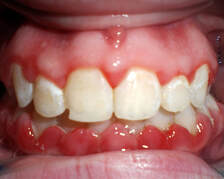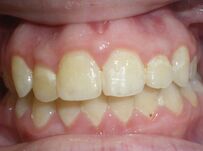|
We have all had in-depth discussions about brushing and flossing with patients. Although the recommended brushing duration is 4 minutes per day, most people make an effort to brush for 40 to 70 seconds on average each day. Some people floss, but none of my patients do (hopefully yours do). It is hardly surprising that 76% of American adults have gum disease in some form. But how can we reduce this figure? Although I don't believe that what we are doing now is incorrect, our strategy for preventing and treating gum disease needs to be changed. The mechanical actions of brushing and flossing don't actually kill anything but will physically remove plaque from teeth. These two conventional procedures don't help the body fight systemic oral infections, they don't kill bacteria, and they don't lower therapeutic volatile sulfur compounds, all of which play a part in gum disease. Let's examine each of the three approaches and how they might be used to combat this expanding issue.
Mechanical Mechanical removal techniques include brushing, flossing with string or water, and general interdental cleaning. Brushing and interdental cleaning are crucial, and there is no disputing that. These techniques are essential for better oral hygiene. The real meaning of mechanical removal, however, is "picking up germs and throwing them away, rather than killing them with chemicals or heat.” Simply removing some of the plaque from the tooth during brushing and flossing, adding it to our saliva along with some toothpaste (for fresh breath, of course), and then spitting it all out is brushing and flossing. It offers nothing to aid the patient in battling an ongoing infection and does nothing to eradicate any pathogenic germs. Brushing and flossing are not sufficient if our ultimate goal is to reduce gum disease in our patients. Systemic It is very challenging to control a disease once it has spread to the oral cavity. This is especially true in cases of periodontal disease, which gets worse over time if left untreated. Once the infection has been shown to be active, it can be treated with an antibiotic to start periodontal therapy. This is fantastic for treating the initial infection, but a patient cannot take antibiotics for an extended period of time. As your body develops resistance, using antibiotics may become ineffective in the future. We definitely do not want this to occur. We require an additional resource that our patients can regularly and securely use. Therapeutic The greatest features of mechanical and systemic removal are combined with therapeutic choices to improve routine treatment. The primary item that fits into this category are rinses. As a result of how simple a rinse is for patients to use, this is where we may have a tremendous impact on dental health. In addition to reducing viruses, fungus, and volatile sulfur compounds (VSCs), some rinses can also break up biofilm and kill bacteria, all of which are linked to gum disease and other oral illnesses. It is crucial to remember that not all rinses have these features or can be used for a prolonged period of time; thus, strict criteria should be utilized when selecting rinses. As an example, chlorhexidine is excellent at killing bacteria but ineffective against viruses, fungus, biofilm, or VSCs and has a short shelf life. In addition to its therapeutic limits, the buildup of stains and calculus adds to the workload. Better patient health is what we're after, not adding on more work. Activated chlorine dioxide is an active component to look for in rinses. The same germs that chlorhexidine and other disease-causing pathogens quickly destroy with this substance, but without the unpleasant side effects (no staining, yay!) and may be used for long-term daily use without risk. OraCare is a rinse made with activated chlorine dioxide that is sold in dental offices. The addition of xylitol to this rinse only increases its medicinal advantages. Additionally, patients will actually utilize it, and they’ll love the taste. Every day, mechanical and therapeutic measures must be used to combat gum disease, and if an infection is present, systemic treatment may also be necessary.
0 Comments
Leave a Reply. |
Kristin Goodfellow RDHKristin is Chief Clinical Officer of OraCare, a practicing Registered Dental Hygienist Archives
August 2023
Categories |
1-855-255-6722OraCare is made in the USA.
|
OraCare© COPYRIGHT 2015. ALL RIGHTS RESERVED.



 RSS Feed
RSS Feed